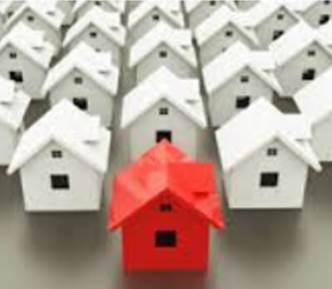Investor specialist Philippe Brach explains how rising prices in one neighbourhood affects prices in another and how investors can benefit

Investor specialist Philippe Brach explains how rising prices in one neighbourhood affects prices in another and how investors can benefit
Most noticeably, we see the ripple effect occurring around our capital cities. Like a wave moving outwards, outer suburbs have steadily grown in value because the price tag on inner city properties is simply too high for many average Australians.
Buying in fringe suburbs in a ripple effect zone means you can invest while the market is affordable, and wait for the wave to push values up.
Higher yields in the outskirts
New demand will also improve rental yields, which increases your cash flow margin. For example, inner city addresses in Sydney and Melbourne are only earning yields around 3% – not the best return rate for multi-million dollar properties.
In contrast, a property in a fringe suburb may cost around half-a-million dollars and yield 5%-plus rental income.
Fringe suburbs aren’t just those that hang on the outskirts of capital cities. Our satellite cities are making noise, too; for example, Newcastle, which lies about 150km north of Sydney, is earning 14.5% annual growth and now has a house price median of nearly $1m.
Its rapid growth was based on a diversifying economy, improvements in its culture and aesthetic, and of course, the fact that properties there were much cheaper than Sydney.
Investors who bought in Newcastle 10 or 15 years ago are laughing all the way to the bank today.
How do you find ripple effect suburbs?
While it’s not an infallible science, finding that ‘next best’ suburb that will catch buyer overflow is worth the time and effort. It can add big numbers to your portfolio, in terms of both growth and rental income.
As a smart investor, you should also view the suburb through the usual property microscope. It must have the basic fundamentals of strong infrastructure, schools and lifestyle features before you commit one to your portfolio.
Philippe Brach is CEO of Multifocus Properties & Finance
This article first appeared in MPA's sister publication Your Investment Property
Most noticeably, we see the ripple effect occurring around our capital cities. Like a wave moving outwards, outer suburbs have steadily grown in value because the price tag on inner city properties is simply too high for many average Australians.
Buying in fringe suburbs in a ripple effect zone means you can invest while the market is affordable, and wait for the wave to push values up.
Higher yields in the outskirts
New demand will also improve rental yields, which increases your cash flow margin. For example, inner city addresses in Sydney and Melbourne are only earning yields around 3% – not the best return rate for multi-million dollar properties.
In contrast, a property in a fringe suburb may cost around half-a-million dollars and yield 5%-plus rental income.
Fringe suburbs aren’t just those that hang on the outskirts of capital cities. Our satellite cities are making noise, too; for example, Newcastle, which lies about 150km north of Sydney, is earning 14.5% annual growth and now has a house price median of nearly $1m.
Its rapid growth was based on a diversifying economy, improvements in its culture and aesthetic, and of course, the fact that properties there were much cheaper than Sydney.
Investors who bought in Newcastle 10 or 15 years ago are laughing all the way to the bank today.
How do you find ripple effect suburbs?
While it’s not an infallible science, finding that ‘next best’ suburb that will catch buyer overflow is worth the time and effort. It can add big numbers to your portfolio, in terms of both growth and rental income.
- First, look for booming suburbs, particularly those with impressive growth over the past 12 months.
- Investigate the cause of the recent growth. Make sure it’s because of long-term improvements such as new infrastructure, not a spike in sales from development releases (this is very important: the more landlocked the suburb, the greater the chances of overflow to neighbouring suburbs).
- List the immediate neighbours and also the next layer out, and find the recent growth statistics for each.
- Look for indicators that the ripple effect will occur. Typically, the suburb needs to have the same type of growth drivers as the booming suburb, and also appeal to the same demographic.
- Future unwanted infrastructure, such as a highway slicing through the suburb
- Signs of an uneasy shift in economic circumstances, such as a large local employer shutting down
- Large numbers of developments planned that could quash property values for some time
- The suburb lacking the same infrastructure and lifestyle features that will buoy prices, despite the success of neighbouring suburbs.
As a smart investor, you should also view the suburb through the usual property microscope. It must have the basic fundamentals of strong infrastructure, schools and lifestyle features before you commit one to your portfolio.
Philippe Brach is CEO of Multifocus Properties & Finance
This article first appeared in MPA's sister publication Your Investment Property



